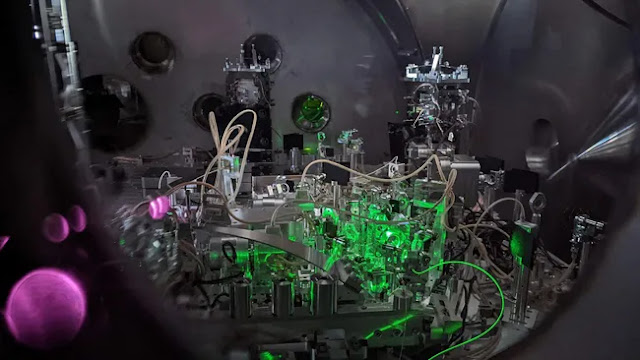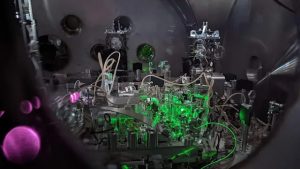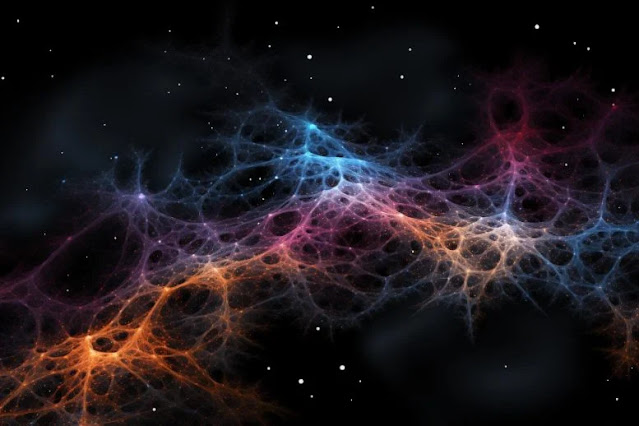Frequency-dependent squeezing is a novel approach employed by LIGO gravitational wave observatory researchers to enhance weak signals above quantum noise.
Researchers at the biggest gravitational wave observatory in the world have recently managed to push light past a crucial quantum limit.
The Laser Interferometer Gravitational-Wave Observatory (LIGO) will be able to detect more small-scale space-time ripples thanks to a novel approach called frequency-dependent squeezing. This will increase the number of collisions between neutron stars and black holes that the LIGO can identify.
These cosmic waves are detected by the LIGO detector because of the way they warp space-time as they move across it. The experiment is made up of two intersecting L-shaped detectors, each with two identical laser beams inside and two arms that are 2.48 miles (4 kilometers) long. When a gravitational wave passes through Earth, one arm of the detector’s laser light will compress while the other will expand, causing a slight change in the relative path lengths of the beams that arrive at the detector.
However, LIGO’s detectors need to be extremely sensitive because these distortions are so small—often the size of a few thousandths of a proton or neutron. Their most accurate readings are really tainted by noise from quantum effects, or the impulsive interactions of subatomic particles because they are that sensitive.
Tiny particles that appear and disappear at random cause high-frequency noise. The rumbling of reflecting light particles that makes the mirrors wobble is the source of low-frequency noise. LIGO is limited in the number and kind of gravitational waves it can identify by these two sources.
Physicists used Heisenberg’s uncertainty principle, which says that we can only simultaneously know certain pairings of a particle’s physical attributes to a given degree of certainty, to overcome these quantum limits.
This implies that the amplitude (or power) and frequency of the light inside LIGO can be measured with varying trade-offs and that enhancing one feature may come at the expense of enhancing another. The scientists adjusted the light so that the uncertainty surrounding its frequency or amplitude could be “squeezed”” as needed by employing crystals that split individual photons, or packets of light, into two entangled photons.
According to the researchers, frequency-dependent squeezing functions similarly to pinching a balloon. If you pinch one end of a balloon to make it bigger, the overall uncertainty is moved to the other end. Similarly, if you pinch one quality of light to make it more certain. This means that a squished phase at high frequencies makes the signal stronger than noise from quantum disturbances, while a compressed amplitude at low frequencies decreases noise from the mirror rumble.
Co-lead author Dhruva Ganapathy, an MIT graduate student, said in the statement, “It is true that we are doing this really cool quantum thing, but the real reason for this is that it’s the simplest way to improve LIGO’s sensitivity.” “Otherwise, we would have to turn up the laser, which has its own problems, or we would have to greatly increase the sizes of the mirrors, which would be expensive.”




